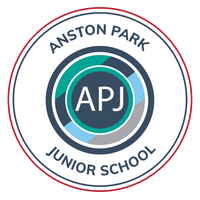Design and Technology
Subject leader: Mr Bradley
Purpose of study
Design and technology is an inspiring, rigorous and practical subject. Using creativity and imagination, pupils design and make products that solve real and relevant problems within a variety of contexts, considering their own and others’ needs, wants and values. They acquire a broad range of subject knowledge and draw on disciplines such as mathematics, science, engineering, computing and art. Pupils learn how to take risks, becoming resourceful, innovative, enterprising and capable citizens. Through the evaluation of past and present design and technology, they develop a critical understanding of its impact on daily life and the wider world. High-quality design and technology education makes an essential contribution to the creativity, culture, wealth and well-being of the nation.
Aims
The national curriculum for design and technology aims to ensure that all pupils:
- develop the creative, technical and practical expertise needed to perform everyday tasks confidently and to participate successfully in an increasingly technological world.
- build and apply a repertoire of knowledge, understanding and skills in order to design and make high-quality prototypes and products for a wide range of users.
- critique, evaluate and test their ideas and products and the work of others.
- understand and apply the principles of nutrition and learn how to cook.
The link below outlines the National Curriculum for Design and Technology Education in England.
Design and Technology National Curriculum (Key Stage 1 & 2)
Key stage 2
Pupils should be taught
When designing and making, pupils will be taught to:
Design
- use research and develop design criteria to inform the design of innovative, functional, appealing products that are fit for purpose, aimed at particular individuals or groups.
- generate, develop, model and communicate their ideas through discussion, annotated sketches, cross-sectional and exploded diagrams, prototypes, pattern pieces and computer-aided design.
Make
- select from and use a wider range of tools and equipment to perform practical tasks [for example, cutting, shaping, joining and finishing], accurately.
- select from and use a wider range of materials and components, including construction materials, textiles and ingredients, according to their functional properties and aesthetic qualities.
Evaluate
- investigate and analyse a range of existing products.
- evaluate their ideas and products against their own design criteria and consider the views of others to improve their work.
- understand how key events and individuals in design and technology have helped shape the world.
Technical knowledge
- apply their understanding of how to strengthen, stiffen and reinforce more complex structures.
- understand and use mechanical systems in their products [for example, gears, pulleys, cams, levers and linkages].
- understand and use electrical systems in their products [for example, series circuits incorporating switches, bulbs, buzzers and motors].
- apply their understanding of computing to program, monitor and control their products.
Cooking and nutrition
-
understand and apply the principles of a healthy and varied diet
- prepare and cook a variety of predominantly savoury dishes using a range of cooking techniques.
- understand seasonality, and know where and how a variety of ingredients are grown, reared, caught and processed.
Design and Technology Curriculum Vision
Long term curriculum map
Below is a copy and a link to our Design and Technology long term curriculum map.









